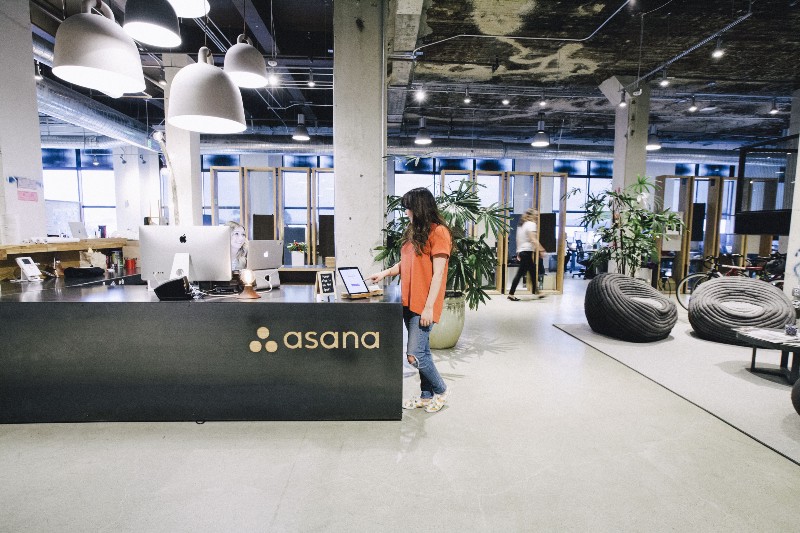Sonja Gittens Ottley from Asana shares challenges and successes from the company’s journey towards building a thriving diverse team.
Research has shown, over and over again, that diversity is important when growing any team: It contributes to the overall success of businesses, it lends itself to more creativity, and it can help teams better understand and reach broader audiences. Diversity is necessary for us to look like the change we want to see in the world, and we can achieve it through sourcing, improved recruiting practices, and partnerships—with both industry and recruiting partners.
On the other side of the diversity coin is inclusion—the often overlooked, underestimated side of building a team.
Inclusion—creating an environment where every employee feels welcome and valued—is the cornerstone to making sure that diverse teams thrive. It prevents attrition, attracts even more top diverse talent, and helps diverse groups see and achieve success both within and outside of an organization. Diversity without inclusion does a disservice to your long-term diversity and business goals, as well as to your employees.
But building inclusion into your company’s DNA isn’t as hard as it may sound. We’ve found some effective ways to do so and are constantly looking for more.
Lead with everyone in mind
Support across the organization is necessary for everyone to feel included, but one way to build an inclusive team is from management’s perspective. To do so, managers must lead with everyone in mind, giving every member of a team the opportunity to control their own work and holding everyone accountable for their work. This signals to a team that they are trusted and valued and that they can feel safe taking risks.
“Because of the AoR system at Asana, once I had taken on certain responsibilities, I felt confident that I was the decision maker and empowered to take risks. Making a mistake doesn’t mean that I’ll never be given responsibilities again. It means I get to learn and apply my experience to the next challenge. I really appreciate how much my manager has entrusted to me, even though he and I are very different.”
-Female engineer, Asana
Foster support through ERGs and mentorship
Developing resources within a company for employees to rely on is a great way to build an inclusive environment across individuals, teams, and the entire organizations. These can include employee resource groups and mentorship, both of which signal to all employees that a workplace is inclusive. By empowering everyone to participate in a community where they can access peer support, mentoring and harness career development opportunities as well as gather for social activities and community oriented discussions, employees foster deeper relationships with one another, learn skills, and face challenges together. This helps people not only feel valued and invested in, but also connects them to the rest of the organization.
“Belonging to the Asana Women’s Resource Group has given me a safe space to share my struggles and to learn from other women whom I otherwise may not have gotten to know so well.”
– Female engineer, Asana

Group meeting in the Asana offices.
Educate to create allies
Part of inclusion comes from understanding others’ perspectives and educating one another. Practices to teach one another can include information sharing, allyship training, and learning talks. You can share information such as interesting articles in an Asana project, Slack channel (we rely on the channels #ladies, #asana-women, and #gradient), or diversity onboarding sessions. Allyship trainings and learning talks, such as how to be an ally to the transgender community, how to avoid unconscious bias, and the Conscious Leadership Group can provide teams with a common vocabulary and framework to empathize and communicate with one another.
Contribute to one another’s growth with feedback
Feedback—whether it’s between peers, managers and reports, or part of a self review—allows everyone to contribute to one another’s betterment, both professional and personal. By focusing feedback on strengths and contributions, teammates feel valued and part of the team.
Create a safe space for awkward conversations
Having difficult conversations is part of creating a safe space for all groups and allowing everyone to express themselves fully. These conversations can come in the form of one on ones during office hours, group discussions at resource group meetings or regular open mics, or even during onboarding sessions. Having a safe space for these conversations and trusting that discussions are being held with good intent from all sides is just as important as the content that comes out of them.
Be honest with yourself
Honesty about where you and your team stands, what needs to improve, and what your strengths are is a great first step to understanding how to build an inclusive culture. Start by honestly assessing your values, practices, strengths, and weaknesses, and go from there.
By supporting diverse groups, educating everyone so that your entire team has a framework for effective, inclusive communication, and maintaining transparency, your team will become part of the inclusion process and the virtuous cycle that welcomes more and more diverse folks to the team.
That said, we don’t have it all figured out. Here are some things that we are still thinking about:
- Time management and recognition: How can we recognize and reward people who partake in ERGs and other resources?
- Reacting to tragic events: How can we make our reactions proactive instead of reactive?
- Finding champions: How can we find champions for causes without relying on those who identify with them?
These are just a few things that our team has thought about, but we’d love to hear what your team has done to create a more inclusive workplace. Let us know! @Asana

